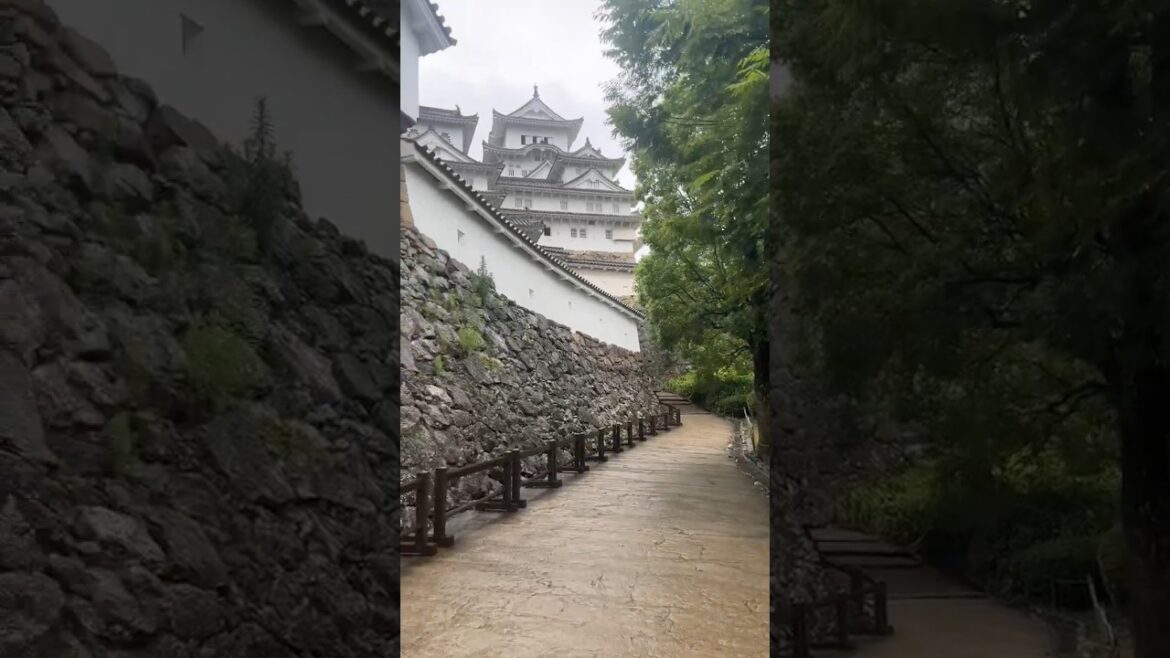Himeji Castle (Outside) – #shorts #travel #japan #himejicastle #himeji #japanesecastle #castle
HIMEJI CASTLE! Coming to Himeji Castle (aka White Heron Castle for soaring keep and brilliant white walls) was a total dream come true because I’ve always wanted to go here. Although it was raining part of the time I was there, I honestly didn’t mind because the castle was still so beautiful and I was inside the castle for most of the time it was raining. Undeniably, a highlight of this trip! As you can probably tell by the length of this video, I couldn’t stop filming it from different angles. It was also much higher than it looks in this video! On site, the people working there provide awesome booklets with a bunch of great information that I’d like to relay to all of you.
“The main keep was built in 1601 and is one of the oldest surviving castle keeps in Japan. Because the castle was never besieged, bombed, or burned, more of Himeji’s buildings have survived to present-day than those of any other Japanese castle. In order to preserve this National Treasure for future visitors, the castle’s keeps, gatehouses, and towers have undergone regular restoration since the early 1900s. The castle comprises a cluster of keeps surrounded by rings of fortifications called baileys. The only stone structures in Himeji Castle are its foundations; the castle’s buildings are made mostly of wood, earth, and plaster.”
“Himeji Castle was the first in Japan to be registered as UNESCO Culteral World Heritage Site. IT is considered as a masterpiece from the times when Japan’s unique castle architectural techniques had reached their peak around the year 1600. The keep was a symbol of authority and power for the lord. At the same time, the Japanese castles built during the Warring States period were filled by the wisdom and technique required for a military facility. Despite its graceful external appearance, Himeji Castle was also built with a robust structure taking sufficiently into consideration the defensive and offensive aspects. Please enjoy to the fullest its powerful and magnificent appearance in every detail.”
“Himeji Castle is a masterpiece of traditional Japanese wooden architecture. The castle’s central keep, at over 45 meters high, is one of the tallest wooden keeps ever built in Japan. From the outside, the keep appears to have only five stories, but inside there are seven floors, including a basement within the stone foundation.”
Princess Sen:
“One of Himeji Castle’s most famous residents was Princess Sen (1597-1666), a noblewoman whose life was marked by political drama and personal tragedy. Princess Sen was a granddaughter of the shogun Tokugawa Ieyasu (1543-1616), and in 1616 she married the heir to the Honda clan, the lords of Himeji. It was her second marriage…Her residence in the castle’s Third Bailey is believed to have been stunningly beautiful and their marriage was a happy union by all accounts.” (I recommend reading her whole story online!)
Sophisticated Defense Mechanisms:
Roof Tiles: “The impermeable surface created by the plaster protects the wooden frame of the keep from moisture and fire. The clan crests of the castle’s lords are stamped into the end tiles on the eaves and ridges of the roofs.
Gates: “A series of sturdy gates and gatehouses protects the entrance to Himeji Castle. The twenty-one surviving gates were built in the elegant architectural style of the Azuchi-Momoyama period (1568-1603). If the castle came under attack, the gates would prevent attackers from rushing directly into the residences at the center of the castle. The gates’ narrow entryways, some of which are barely wide enough for two people, forced the attackers into deadly bottlenecks.”
Windows: “Thick wooden bars were installed on the castle’s windows to prevent entry and to deflect arrows and bullets. Two of the smaller keeps, on the west and northwest sides of the main keep, feature bell-shaped windows decorated with black lacquer and gold leaf, a design borrowed from buddhist temples.”
Loopholes: “There are 997 loopholes built into the walls of Himeji Castle. The tall, rectangular slits were for archers, while the more compact openings–the squares, circles, and triangles–were for gunners.”
Parapet Walls: “Himeji’s huge stone retaining walls are topped with parapets made of earth and plaster. At other castles, these parapets are often built with a wooden frame or using techniques similar to wattle and daub. At Himeji, the parapets are made from solid earth coated with plaster for additional strength and fire resistance.”
This was filmed with an iPhone 13. Hope you enjoy!
Note: The music in this video is an excerpt from Wandering Spirit by Nameless Ronin. All credits go to the owner(s). Here’s the link: https://www.youtube.com/watch?v=_oTDb0GtI_c&list=RD_oTDb0GtI_c&start_radio=1


AloJapan.com